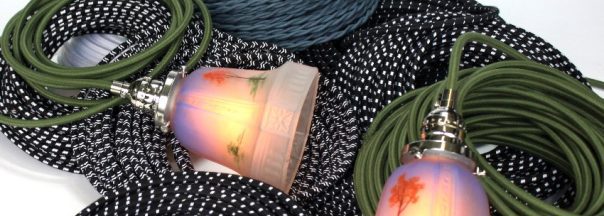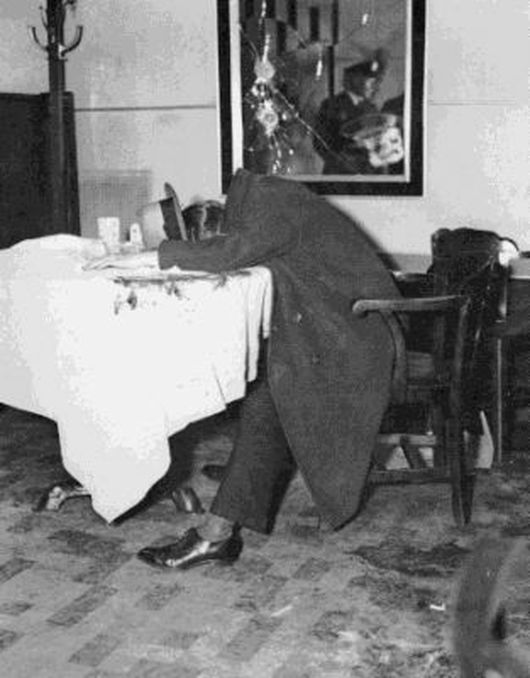Just who is Arthur Flegenheimer, and what does he have to do with Sundial Wire™, anyway?
The answer would probably surprise you more than him. Jim founded this company, in 1992, because virtually every single major electrical wire and cable company in the United States, had long since ceased to make cloth-covered twisted lamp cord. It was an obsolete product, no longer in demand. As a set decorator for feature films and television shows Jim had worked on many period movies and TV shows, such as The Kennedys of Massachusetts, the comedy Mermaids, and the Civil Rights era drama Love Field. Part of his job included first researching the period, then recreating authentic, period-correct sets, right down to the smallest details: stringing knob-and-tube wiring in an attic, or re-wiring an antique electric lamp or electric fan with the correct wire for the period.

Which brings us back to Arthur. Sort of.
In the winter of 1990-1991, Walt Disney’s Touchstone Pictures division was in the middle of producing a filmed adaptation of E.L. Doctorow’s novel, Billy Bathgate. The novel was a coming of age tale set in a world of New York gangsters and bootleggers, the principal of which was Arthur Flegenheimer, more commonly known as Dutch Schultz. The movie featured Dustin Hoffman, Bruce Willis, a just-breaking-out Nicole Kidman, and a name NEVER associated with any of the above, James V. Kent — who at that time was a young lead set dresser tasked with running the crews who were dressing the location and stage sets in Wilmington and Hamlet, North Carolina.

The story took place in the early to mid-1930’s, and the town of Hamlet doubled for the upstate town of Malone, New York, where Dutch was on trial for tax evasion. Jim worked with an amazingly talented art department transforming many empty storefronts into period retail shops, such a hardware store, a Rexall Drugstore, an art deco movie theater, among many others. No detail was spared as this was the tail end of the era when everything was done “old school.” Today the art department might cheat and just change some key elements, leaving other things to the visual effects artists. Streetlights are a good example. Now it might be too expensive to change over an entire street’s streetlights, when they can be painted out and replaced digitally. But back then it was not really possible or practical to change things digitally.

One of the biggest makeovers on Billy Bathgate involved the remodeling of an old derelict hotel in town called the Terminal Hotel. An exterior portico was designed, skirting the front and side. Inside, hundreds of yards of custom carpet were laid down. Brass railings were installed everywhere. And many, many light fixtures. It was common in the ’20s and ’30s, to retrofit a building — especially the less grand spaces like the individual hotel rooms — by running a string of twisted two conductor-cord up and along the wall, across the ceiling, and then dropping it to a pendant fixture. In this way a building could be electrified quickly without an expensive gut job. Electrical and building codes would catch up to and eliminate this practice — but the set decorating department on Billy Bathgate researched it, found it was done, and so determined that exposed wiring was a good “period” look.

You see where this is going, right? Jim was buying all the cloth-covered twisted wire he could find in local hardware stores and electrical supply houses. Remarkably, everyone seemed to have a roll, or half a roll, on hand. Or a roll in the basement. But that was it. And when he tried to order more, the answer was always no. There was no more. No one was making it. He phoned the wire companies on the spools, many of them in Rhode Island: Royal Electric Company, Carol Cable, American Insulated Cable. If he could get someone on the phone (some of these companies were already in receivership) these people would either laugh, or sympathetically shrug, but the answer was always the same: No more cloth-covered wire. Anywhere.

Which to Jim, sounded a lot like a problem to be solved.
To be continued…



Interested to hear the rest of the story.
LikeLike
Want to hear the rest of your story in Woodbury or Northampton or maybe a trip to Steuben Maine with the Kents.
LikeLike
Wow – such a great story!
LikeLike
I would like to read the rest of the story.
LikeLiked by 1 person